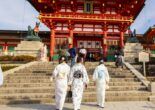Though small, Tabata offers a blend of history and culture, from the Tabata Memorial Museum of Writers and Artists to its unique Norakuro manhole cover. Discover quiet shrines and temples that provide a peaceful escape in this often-overlooked Tokyo neighborhood.

The stations along the Yamanote line that encircles central Tokyo come in three flavors: the major commercial centers of Shinjuku, Ikebukuro, Shinagawa and Tokyo itself; the middling important centers like Nippori and Meguro; and the small and unremarkable places like Mejiro, Tamachi – and Tabata.
But in a megalopolis the size and age of Tokyo, you will find that even the smallest and seemingly unremarkable place is steeped in history, housing hidden treasures, and may even have been the site of a decisive battle in the distant past.
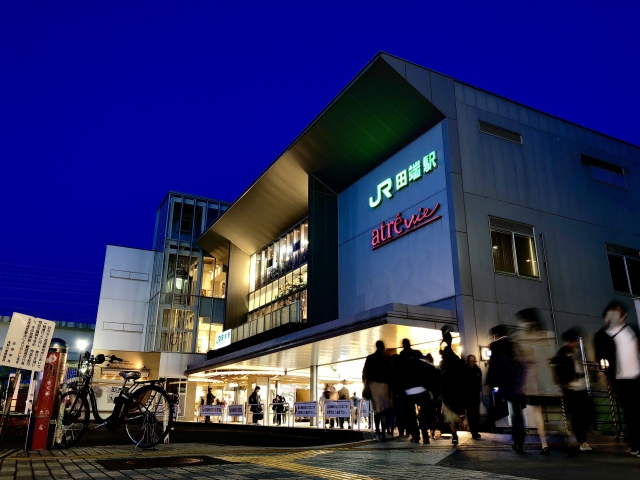
Tabata was never the site of a decisive battle (as far as known), but the main attractions around this little station are cultural. To foreigners, the name may sound the same as the July 7 festival, but the name of the station is Tabata (田端) and the festival Tanabata (七夕).
But Tabata is a good place to catch a whiff of some Japanese culture. Just next to the station, outside the north exit, you will find the Tabata Memorial Museum of Writers and Artists. While some of Japan’s cultural heroes and finest authors lived here at the beginning of the last century, that era is long gone – but kept alive by the Tabata Memorial Museum of Writers and Artists. The museum does its best to enlighten residents and visitors both about the rich Japanese arts and literature, which of course includes the art forms of manga and anime, comic books and animated films. In Japanese only.
Manhole Card Claim to Fame
But this off-the-beaten path museum has another claim to fame among serious collectors: The Norakuro manhole card.
As you walk in a Japanese city, you may notice the unusually ornate manhole covers covering the maintenance entrances to sewers and water mains. Cast in iron with patterns representing local events or sights, the manhole covers are colored with wear-resistant paint. Often, they became part of the local attractions.
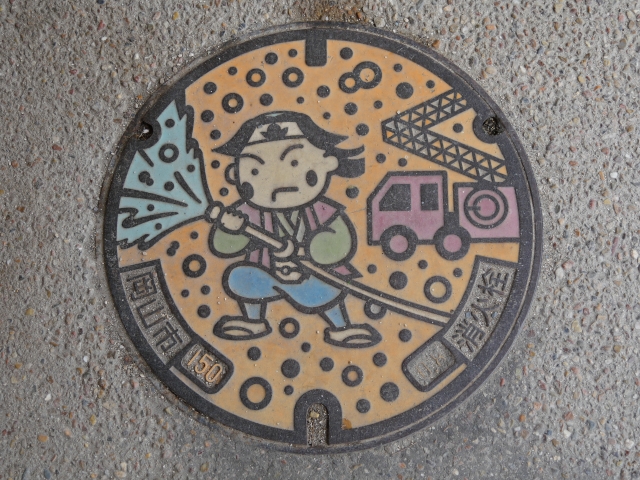
Like any country populated by serious collectors, there are manhole cover collectors in Japan. They do not sneak about at night lifting manhole covers, but operate more like birdwatchers and trainspotters, taking photos and making notes of especially remarkable manhole cover occurrences. And sharing them with their tribe on social media.
You can occasionally buy old manhole covers from the cities, as they are regularly replaced due to wear and tear (after all, most of them are placed in traffic). They may make for a unique, if inconvenient, souvenir. Manhole covers are both unwieldy and heavy, and may not even fit in your checked luggage.
Official City Manhole Help
Japanese city authorities, however, are trying to help their manhole cover spotting citizens. They issue manhole cover cards, which are like a little pamphlet showing and explaining the design of the manhole covers, and where to find them (on a helpful map). At special events, like festivals and fireworks, the city authorities distribute special versions of the manhole cover cards. They quickly become collectors items in themselves, as do the special cards distributed only in special locations. Like the Norakuro manhole cover card distributed at the Tabata Memorial Museum of Writers and Artists.
Hapless Dog Covers Manhole
Norakuro is a hapless dog, modeled on Felix the Cat, who ends up in various military situations (the comic was first published in 1932), and survives through luck and pluck. For the curious, it can be fun to know that the voice actor who played Noraku in the first anime also voiced another famous cat: Doraemon.
Post-war, the comic continued with more peaceful situations, but still luck and pluck. The manga does not have anything a priori to do with Tabata, the only connection being the manhole cover designs.
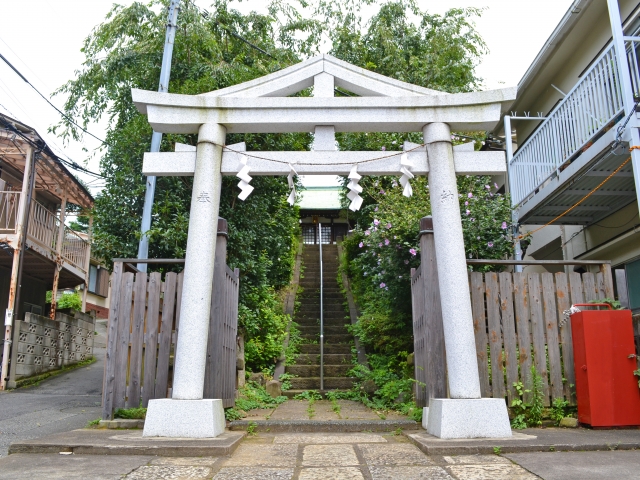
If Tabata was a place where the only sight was the manhole covers, it would quickly race to the top of the list of the most boring stations along the Yamanote line. But even if this one of the areas that are mostly residential, there are interesting places. For instance, you will not often find two shrines to Hachiman, the god of war, within 500 meters of each other in many places. But you do in Tabata.
Like most of the neighborhoods in Tokyo, this is an area where you will find several shrines and temples. West of the station, the Tabata Hachiman-Gu is a regular sized shrine guarded by the usual Inari statues, on the top of a little hill and well kept. And less than five hundred meters walk to the northeast, a second shrine to Hachiman, the Kami-Hachiman Jinja, venerates the same god. The shrines are small with an almost homely feel; but they do not place among the ranks of the famous on the list of more than 44000 Hachiman shrines in Japan. As Hachiman may originally have been a harvest deity, it would make sense in what was an agricultural area until Tokugawa Ieyasu founded Edo, and as shogun and chief of the samurai caste venerated the god of war.
Founded 1100 years ago
There are several more shrines in the area, and several temples. Hakusan Shrine, known for its hydrangea festival in July, was established in 948 (yes, more than 1100 years ago). You can tell that the temples and shrines used to share the same grounds, as this was the norm until the beginning if the Meji government, when the emperor took over from the shogun as defacto head of state. Temples and shrines happily coexisted until the late 19’th century, when the nationalist government coopted the Shinto religion for its own purposes.
Before then, the several temples around Tabata were part of the “green circle” created by Tokugawa Ieyasu when he founded Edo, as part of the fortifications making it more difficult for an invader to attack Edo Castle, and easier for the defenders to break out. These temples are often associated with graveyards, often featuring graves of samurai families or regional governors who had their residences – also assigned by the shogun – in the area.
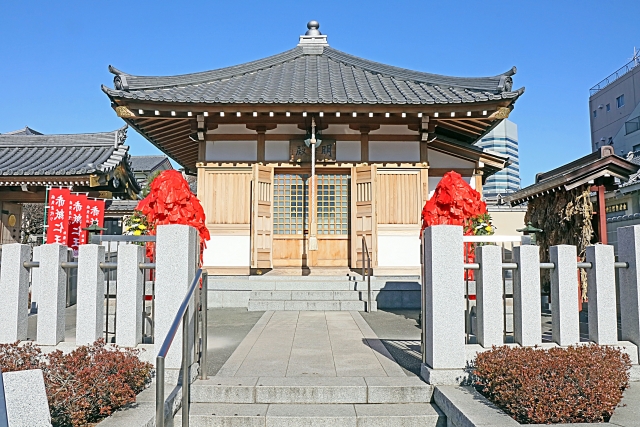
The biggest temple in the area is Tabata Tokukaji, which is associated with the Tokugawa family in another way: They used to come here and offer prayers. The temple has a Tokugawa crest to prove it.
But the Tokakuji also has another interesting feature. There are two black statues of deities in the courtyard, often pasted over with strips of red paper. The common belief is that the red paper will take any disease and sickness with it as you paste it on the statue.



